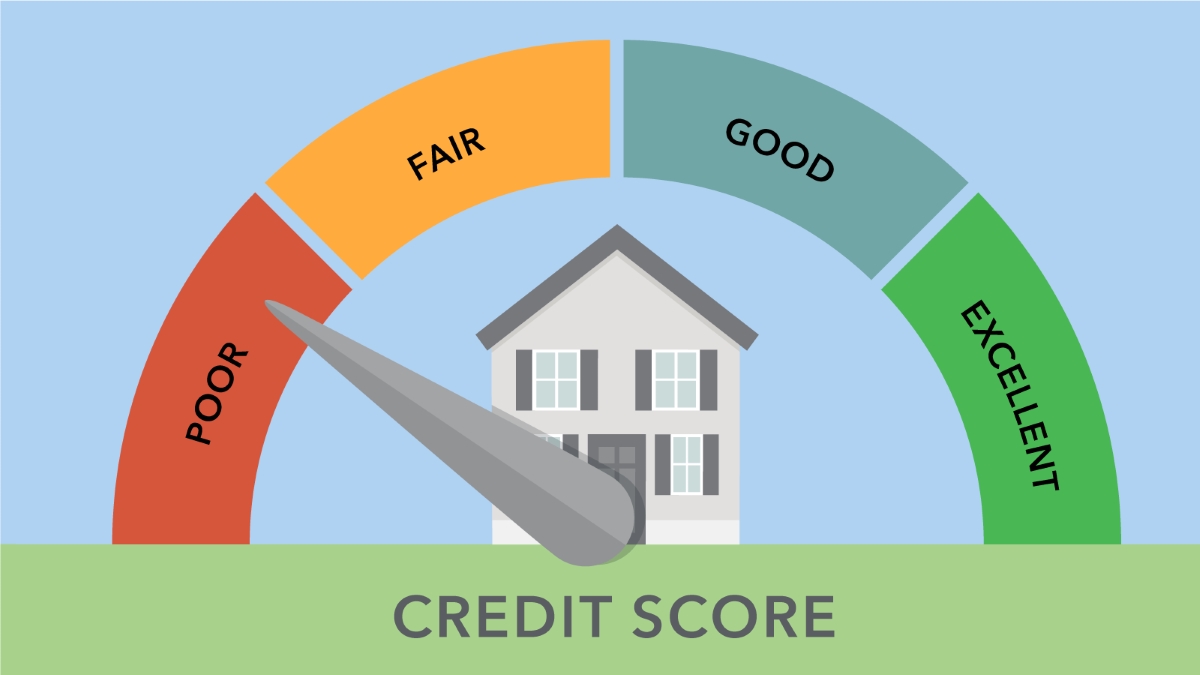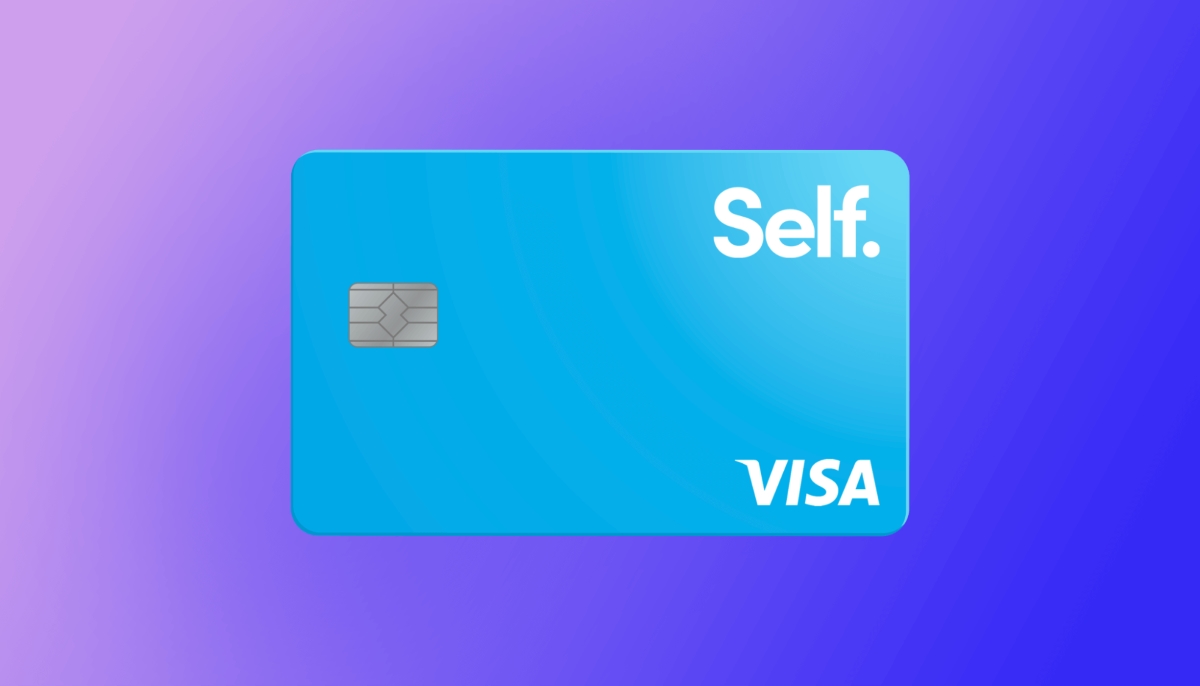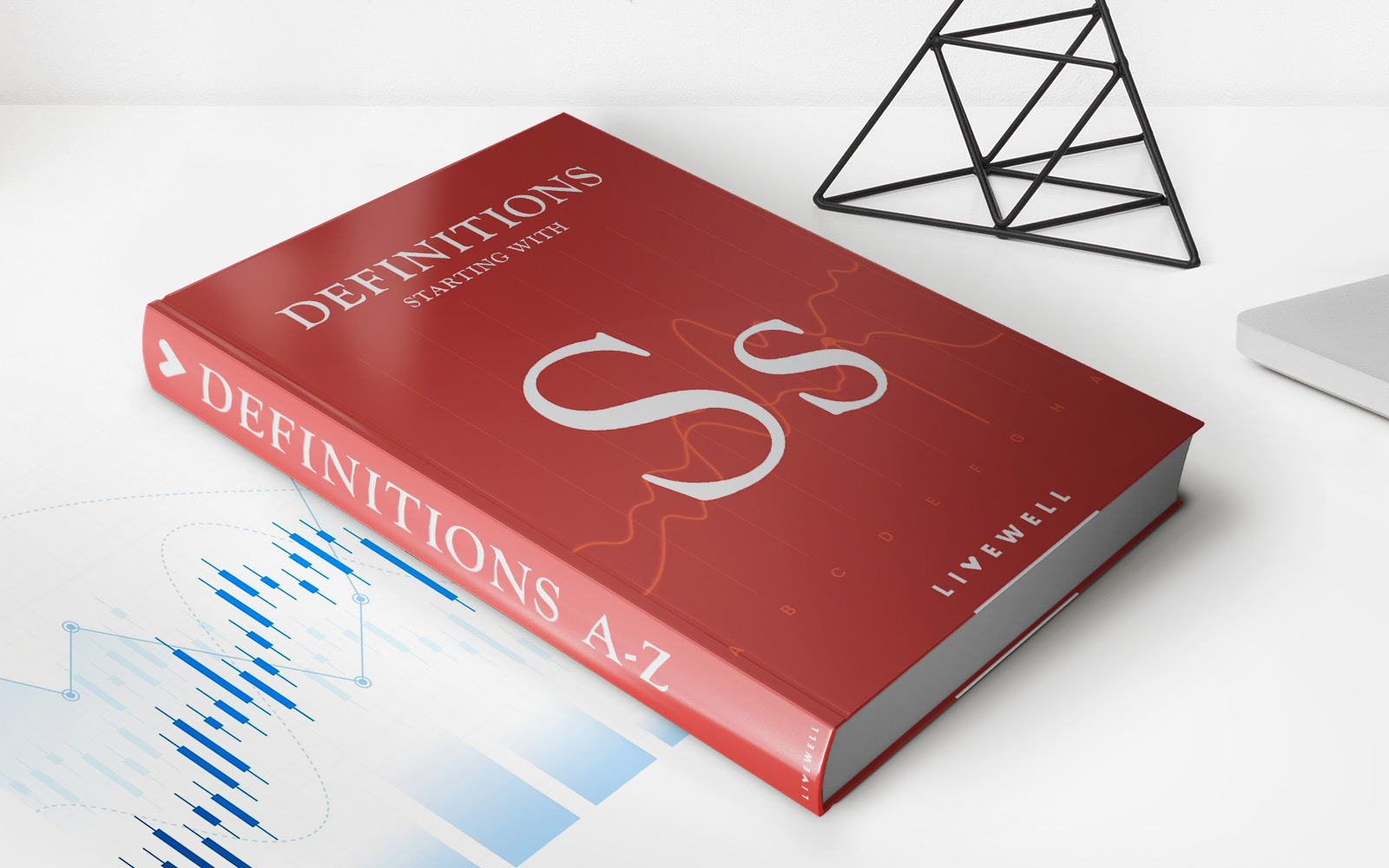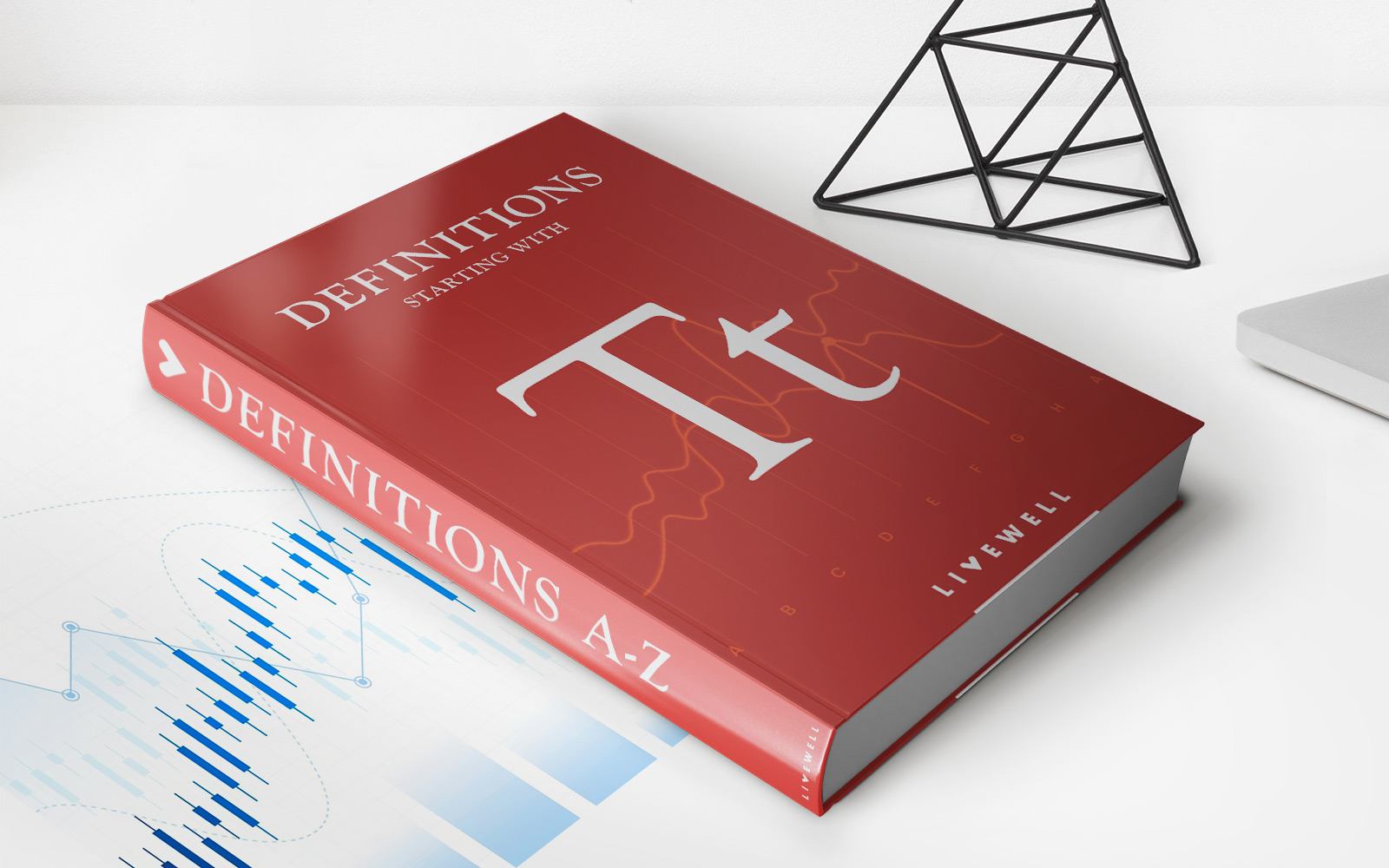

Finance
How Does Credit Recovery Work In High School
Published: January 13, 2024
Learn how credit recovery works in high school and how it can help students catch up on their finance courses and graduate on time.
(Many of the links in this article redirect to a specific reviewed product. Your purchase of these products through affiliate links helps to generate commission for LiveWell, at no extra cost. Learn more)
Table of Contents
- Introduction
- What is Credit Recovery?
- Why is Credit Recovery Necessary?
- Eligibility for Credit Recovery
- Credit Recovery Options
- Online Credit Recovery Programs
- In-Person Credit Recovery
- How Credit Recovery Works
- Credit Recovery Process in High Schools
- Benefits of Credit Recovery
- Challenges and Limitations of Credit Recovery
- Success Stories of Credit Recovery
- Conclusion
Introduction
Credit recovery is a crucial aspect of the high school education system that allows students to earn the necessary credits for graduation. It provides an opportunity for students who may have struggled academically or faced challenging circumstances to make up for missed or failed courses in order to stay on track towards their educational goals.
High school is a critical period in a student’s life, where they obtain the foundation for future success. However, not every student follows a linear path to graduation. Some may face personal issues, academic difficulties, or unexpected situations that hinder their progress. In such cases, credit recovery programs come into play.
The primary goal of credit recovery is to help students overcome obstacles and regain the credits they need to graduate on time. By offering alternative methods of learning and assessment, credit recovery programs promote equity and ensure that all students have an equal opportunity to earn their diploma.
In the following sections, we will delve into the details of how credit recovery works in high schools, the eligibility requirements, different options available, and the benefits and challenges associated with this approach.
It is important to highlight that credit recovery programs are not a substitute for regular coursework. They are designed to provide a second chance for students to demonstrate their mastery of essential concepts and skills, enabling them to move forward with their education and future endeavors.
What is Credit Recovery?
Credit recovery is a program designed to assist high school students in obtaining credits for courses they were previously unable to complete successfully. It is a means of ensuring that students who have fallen behind or faced challenges in their academic journey can still graduate on time.
When a student fails a course or does not earn enough credits to progress to the next grade, credit recovery provides an opportunity for them to make up those missed credits. It allows students to revisit the content and skills taught in the original course, often through alternative methods of instruction and assessment.
Credit recovery programs can vary in format and delivery, depending on the school or district. Some schools offer online credit recovery programs, while others provide in-person sessions, or a combination of both.
The essence of credit recovery is to provide students with a chance to make amends for past academic struggles and relearn the necessary material needed for academic success. By completing the credit recovery program, students demonstrate proficiency in the subject matter and earn the credits required for graduation.
It is important to note that credit recovery is not a quick fix or an easy way out. Students are still expected to put in the time and effort to master the material and meet the necessary requirements set by their school or district. However, credit recovery offers a more flexible and tailored approach to learning, allowing students to make progress at their own pace and with additional support if needed.
Credit recovery programs not only benefit students academically but also foster a sense of resilience and determination. By overcoming obstacles and successfully completing credit recovery courses, students develop crucial skills such as time management, self-discipline, and problem-solving, which are essential for future success.
Why is Credit Recovery Necessary?
Credit recovery is a necessary component of the high school education system because it offers a lifeline to students who have faced setbacks or difficulties in their academic journey. There are several reasons why credit recovery programs are essential:
- Opportunity for Graduation: Credit recovery programs ensure that students do not fall behind and have a chance to earn the credits needed for graduation. Without credit recovery, students who fail or miss credits may risk not graduating on time, which can have long-term consequences for their educational and career goals.
- Equity and Inclusion: Credit recovery promotes equity and ensures that all students, regardless of their background or circumstances, have an equal opportunity to earn their diploma. It provides a second chance for students who may have experienced personal challenges, faced difficult circumstances, or struggled academically.
- Addressing Learning Gaps: Credit recovery programs address learning gaps by allowing students to revisit and reinforce concepts they may not have fully understood or mastered the first time around. It gives students the opportunity to fill in those knowledge gaps and build a solid foundation for future learning.
- Keeping Students Engaged: For students who have struggled with traditional classroom settings, credit recovery programs offer alternative methods of learning. These programs often incorporate interactive and engaging activities that cater to different learning styles, helping to keep students motivated and engaged in their education.
- Preventing Dropouts: Credit recovery plays a crucial role in preventing high school dropout rates. By providing students with the support and resources they need to catch up on missed credits, credit recovery programs can help keep students on track and increase their chances of successfully completing high school.
In essence, credit recovery programs recognize that students may encounter obstacles or face difficulties that impede their progress. By offering a tailored and flexible approach to learning, credit recovery ensures that every student has an opportunity to succeed, graduate, and pursue their future aspirations.
Eligibility for Credit Recovery
Students who are eligible for credit recovery programs are those who have failed a course or have not earned the required credits to move forward academically. Eligibility criteria may vary depending on the school or district, but the general guidelines for credit recovery include the following:
- Failed Courses: Students who have failed one or more courses typically qualify for credit recovery. This could be due to various reasons, such as poor performance, insufficient effort, or extenuating circumstances that affected their ability to succeed in the course.
- Insufficient Credits: Students who have not earned enough credits to progress to the next grade or graduate may be eligible for credit recovery. This could be because they did not pass certain courses or did not take the required number of courses to fulfill graduation requirements.
- Time Constraints: In some cases, students may have fallen behind due to extenuating circumstances, such as illness, family issues, or other personal challenges. Credit recovery offers these students the opportunity to catch up on missed coursework and credits within a specific timeframe.
- School/District Policies: Schools and districts often have specific policies regarding credit recovery eligibility. These policies may outline the minimum grade required to qualify for credit recovery, the number of credits needed, and the timeline for completing the credit recovery program.
It is crucial to consider that credit recovery programs are not a one-size-fits-all solution. Each student’s eligibility and participation in a credit recovery program are assessed on an individual basis. School counselors, teachers, and administrators play a vital role in determining a student’s eligibility and recommending appropriate credit recovery options based on the student’s academic history, learning needs, and goals.
While credit recovery programs offer a valuable opportunity for students to regain lost credits, it is important for students to approach credit recovery with a commitment to learning and improvement. Active participation, dedication, and a willingness to put in the effort are essential for successful credit recovery and overall academic success.
Credit Recovery Options
Credit recovery programs offer various options to meet the diverse needs of high school students who require additional support in earning the necessary credits for graduation. These options can be tailored to accommodate different learning styles, academic goals, and personal circumstances. Here are some common credit recovery options:
- Online Credit Recovery Programs: Online credit recovery programs have gained popularity in recent years. These programs allow students to complete their coursework and assessments online, providing flexibility in terms of time and location. Online credit recovery programs often provide interactive lessons, multimedia resources, and immediate feedback to ensure students grasp the material and progress at their own pace.
- In-Person Credit Recovery: In-person credit recovery programs involve attending classes or sessions held at the school or designated locations. This format allows students to interact directly with teachers and engage in collaborative learning with peers. In-person credit recovery can provide a structured environment with face-to-face instruction, individualized support, and hands-on activities to help students grasp challenging concepts.
- Blended Learning: Blended learning combines elements of both online and in-person instruction. This option offers a hybrid approach, allowing students to complete some coursework online and attend in-person sessions for additional support and hands-on activities. Blended learning credit recovery programs offer the benefits of flexibility and personalized instruction while still providing the advantages of face-to-face interaction with teachers and peers.
- Summer School: Many schools offer credit recovery programs during the summer break. Summer school provides an intensive learning environment, allowing students to focus on specific courses and make up missed credits in a shorter timeframe. It can be an excellent option for students who want to catch up or get ahead in their studies.
- Flexible Scheduling: Some credit recovery programs offer flexible scheduling options, allowing students to complete their coursework at a pace that works best for them. This could involve working on assignments and assessments during non-traditional school hours or creating a customized schedule that aligns with the student’s other commitments.
It is important for students and their families to discuss the available credit recovery options with school counselors, teachers, or administrators to determine the most suitable approach based on the student’s individual needs, learning style, and academic goals. By exploring these options, students have a better chance of finding a credit recovery program that will empower them to succeed and earn their high school diploma.
Online Credit Recovery Programs
Online credit recovery programs have become increasingly popular in recent years, offering students a flexible and accessible way to earn missing credits and stay on track towards graduation. These programs provide a range of benefits and opportunities for students to recover credits in a virtual learning environment.
Online credit recovery programs utilize digital platforms and resources to deliver instructional materials, interactive lessons, and assessments. Here are some key features and advantages of online credit recovery programs:
- Flexibility: One of the biggest advantages of online credit recovery is the flexibility it offers students. They have the ability to work on their coursework at their own pace and on their own schedule, allowing for a personalized learning experience that caters to individual needs and commitments outside of school.
- Accessibility: Online credit recovery programs eliminate geographical constraints, making education accessible to students regardless of their location. As long as there is an internet connection, students can access the program from anywhere, whether it be at home, a library, or a community center.
- Individualized Learning: Online credit recovery programs often provide personalized learning experiences. Students can progress through the coursework at a pace that suits their learning style, focusing on areas where they need additional support and moving quickly through material they have already mastered.
- Interactive Resources: Online credit recovery programs incorporate various multimedia resources, such as videos, interactive quizzes, simulations, and multimedia presentations. These resources enhance engagement and understanding, allowing students to grasp concepts in a dynamic and interactive manner.
- Immediate Feedback: Many online credit recovery programs offer instant feedback on assessments and assignments, allowing students to understand their mistakes and learn from them right away. This immediate feedback helps students track their progress, identify areas of improvement, and make necessary adjustments to their learning approach.
- Support and Monitoring: Although online credit recovery programs provide independent learning opportunities, they also offer support mechanisms. Students can often reach out to teachers or online tutors for assistance with concepts they find challenging. Furthermore, educators can monitor student progress and provide guidance to ensure students stay on track.
It is important to note that online credit recovery programs require self-discipline and motivation to stay engaged and complete the coursework. Students must take responsibility for their learning while taking advantage of the flexibility and resources provided by the program.
Online credit recovery programs can be a valuable option for students who require a more flexible and individualized approach to earning missing credits. By leveraging technology and innovative instructional methods, these programs empower students to overcome academic setbacks and graduate on time.
In-Person Credit Recovery
In addition to online credit recovery programs, many high schools offer in-person credit recovery options. These programs provide students with the opportunity to engage in face-to-face instruction and receive support from teachers and peers during their credit recovery journey.
Here are some key aspects and benefits of in-person credit recovery programs:
- Face-to-Face Instruction: In-person credit recovery programs involve attending classes or sessions at a physical location, such as the school or designated learning center. This format allows students to interact directly with teachers, fostering a more personal and collaborative learning environment. Students can ask questions, seek clarification, and engage in real-time discussions with their instructors and classmates.
- Structured Learning Environment: In-person credit recovery programs provide a structured setting, ensuring that students have a dedicated space and time for focused learning. This environment often helps students stay organized, maintain a routine, and remain on task while working towards completing their credit recovery coursework.
- Individualized Support: Instructors in in-person credit recovery programs can provide individualized attention and support to students. They can identify areas where students may be struggling and offer targeted interventions to help students master challenging concepts. The direct interaction with teachers allows for personalized feedback and guidance throughout the credit recovery process.
- Collaborative Learning: In-person credit recovery programs encourage collaboration among students who are also working towards credit recovery. Group activities, discussions, and projects provide opportunities for peer learning, allowing students to support and motivate each other in their academic progress. This collaborative environment fosters a sense of community and camaraderie.
- Hands-On Activities: In-person credit recovery programs often incorporate hands-on activities and practical exercises to reinforce learning. These activities can help students grasp and apply concepts in a more tangible way, enhancing understanding and retention. The hands-on approach can be particularly beneficial for subjects that require tactile or visual learning experiences.
- Accountability: In-person credit recovery programs provide a level of accountability for students. The in-person interaction holds students responsible for their attendance, participation, and completion of assignments. This accountability factor can be beneficial in motivating students to actively engage in their credit recovery coursework.
Overall, in-person credit recovery programs offer a structured and supportive environment that may be advantageous for students who thrive with face-to-face interaction and benefit from the guidance and support of teachers and peers. These programs provide an opportunity to address learning gaps, receive personalized instruction, and regain missing credits in a setting that fosters academic growth and success.
How Credit Recovery Works
Credit recovery programs follow a structured process to help students make up for missed or failed courses and earn the credits necessary for graduation. The specific details of how credit recovery works may vary depending on the school or district, but the general process typically includes the following steps:
- Identification and Assessment: Schools identify students who are eligible for credit recovery based on their academic records and performance. Students may be recommended for credit recovery by teachers, counselors, or administrators. An assessment of the student’s academic needs is conducted to determine the specific courses or credits that need to be recovered.
- Individualized Plan: Once a student is identified for credit recovery, an individualized plan is developed. This plan outlines the courses or credits to be recovered, the timeline for completion, and the specific credit recovery program or approach to be used.
- Coursework and Assignments: Students engage in coursework and assignments related to the specific courses or credits they need to recover. The content and instructional materials may differ from the regular curriculum, but they are designed to cover the essential knowledge and skills required for credit recovery. Students typically work through modules, lessons, or units at their own pace, completing assignments and assessments along the way.
- Instruction and Support: Students receive instruction and support throughout the credit recovery process. In online credit recovery programs, this may involve interacting with virtual teachers and tutors who provide guidance and answer questions. In in-person credit recovery programs, students engage directly with teachers and peers in a classroom setting, where they can seek assistance and clarification as needed.
- Progress Monitoring: Schools and educators monitor student progress throughout the credit recovery program, ensuring that students are making consistent progress towards meeting the credit recovery goals. This monitoring may involve regular check-ins, assessments, or evaluations to track student performance and provide feedback for improvement.
- Assessment and Completion: Once students have completed the required coursework and assignments, they undergo assessments or examinations to demonstrate mastery of the subject matter. These assessments may be conducted online or in-person, depending on the credit recovery program. Students must achieve a certain level of proficiency to earn the credits needed for graduation.
- Transcript and Graduation: Once students successfully complete the credit recovery program and earn the necessary credits, their official transcripts are updated to reflect the recovered credits. This allows them to meet the graduation requirements and move forward in their educational journey.
It is important to note that credit recovery programs are not a guarantee of academic success. Students must actively engage, demonstrate effort, and meet the requirements set by the credit recovery program to earn the credits they need. Credit recovery programs serve as a valuable opportunity for students to make up for past academic setbacks and regain the necessary credits for graduation.
Credit Recovery Process in High Schools
The credit recovery process in high schools involves a systematic approach to support students in making up for missed or failed courses and earning the credits required for graduation. While the specific procedures may vary between schools and districts, there are key steps that are commonly followed:
- Evaluation and Identification: High schools evaluate student records to identify those who are eligible for credit recovery. This could be based on failed courses, insufficient credits, or other criteria set by the school or district. Students are informed about their eligibility and the credit recovery options available to them.
- Goal Setting and Planning: After identification, high school staff work with students to set goals and create a personalized credit recovery plan. This plan outlines the courses or credits that need to be earned, the timeline for completion, and the credit recovery program or method to be utilized.
- Coursework and Instruction: Students engage in coursework that is specifically designed for credit recovery. This may involve separate materials and assignments tailored to the specific courses or credits they need to recover. Instruction can be delivered in various formats including online modules, in-person classes, or a combination of both.
- Monitoring and Support: Throughout the credit recovery process, high school staff closely monitor student progress and provide support as needed. This may involve regular check-ins, academic advisement, tutoring, or additional resources to ensure students stay on track and succeed in their credit recovery efforts.
- Assessment and Evaluation: As students work through the credit recovery coursework, they undergo assessments and evaluations to determine their proficiency in the subject matter. These assessments can include quizzes, exams, projects, or other assignments that measure the students’ understanding and application of the material.
- Credit Validation: Once students successfully complete the credit recovery program and demonstrate mastery of the required content, the school validates and awards the credits. The credits earned are then added to the student’s transcript, reflecting the completion of the credit recovery process.
- Graduation and Future Planning: With the recovered credits, students are able to meet the graduation requirements and continue their educational journey. High schools provide guidance and resources to assist students in planning for their future, whether it be entering college, pursuing vocational training, or entering the workforce.
The credit recovery process in high schools aims to provide students with the necessary support, resources, and opportunities to earn the credits needed for graduation. It is a structured approach that helps students overcome academic setbacks, stay on track, and achieve their educational goals.
Benefits of Credit Recovery
Credit recovery programs offer several benefits to students, schools, and communities. These programs provide a lifeline for students who have faced academic setbacks or challenges and support their journey towards graduation. Here are some key benefits of credit recovery:
- Increased Graduation Rates: One of the primary benefits of credit recovery programs is the positive impact they have on graduation rates. By helping students recover missed or failed credits, these programs ensure that more students are able to meet the requirements for graduation and receive their high school diploma.
- Individualized Learning Opportunities: Credit recovery programs often provide individualized learning opportunities that cater to the unique needs of students. Whether through online platforms, in-person instruction, or a blended approach, these programs allow students to learn at their own pace, receive targeted support, and address specific gaps in their knowledge and skills.
- Equitable Access to Education: Credit recovery programs promote equity by providing all students with access to the resources and support they need to succeed academically. These programs ensure that students who may have faced challenges or obstacles have an opportunity to recover credits and progress towards graduation, regardless of their background or circumstances.
- Increased Student Engagement: Credit recovery programs often incorporate interactive and engaging instructional methods to keep students motivated and engaged in their learning. This can include multimedia resources, real-world applications, and hands-on activities that make the learning experience more enjoyable and meaningful for students.
- Improved Academic Skills: Through credit recovery, students have the opportunity to revisit and reinforce foundational knowledge and skills. This can enhance their overall academic competencies, not only in the specific subject area being recovered but also in critical thinking, problem-solving, and time management skills that are transferable to other academic pursuits.
- Increased Future Opportunities: Earning a high school diploma is a significant milestone that opens doors to various future opportunities. By participating in credit recovery, students ensure that they possess the necessary credentials for post-secondary education, employment, and other pathways. This broadens their options and increases their chances of success in the future.
- Building Resilience and Perseverance: Credit recovery requires students to demonstrate resilience, perseverance, and a commitment to their education. By overcoming academic setbacks and successfully recovering credits, students develop a growth mindset and learn valuable lessons in overcoming challenges, which can be invaluable throughout their lives.
Credit recovery programs play a vital role in supporting students along their academic journey, providing second chances, and ensuring that all students have an opportunity to achieve their educational goals. By offering personalized instruction, flexibility, and targeted support, credit recovery programs pave the way for success and help students reach their full potential.
Challenges and Limitations of Credit Recovery
While credit recovery programs offer valuable opportunities for students to recover missed or failed credits, they also come with certain challenges and limitations. It is important to recognize and address these factors to ensure the effectiveness and success of credit recovery efforts. Here are some key challenges and limitations of credit recovery:
- Time Constraints: Credit recovery typically operates within a limited timeframe, which can pose challenges for students who need to make up multiple credits. The condensed schedule may require students to work diligently and efficiently to complete the necessary coursework and assessments on time.
- Resource Limitations: Schools may face resource constraints when implementing credit recovery programs. Limited staffing, lack of funding, or inadequate technology infrastructure can impact the quality and availability of credit recovery options, limiting the support and resources available to students.
- Preparation and Prerequisite Knowledge: If students lack the foundational knowledge or skills required for credit recovery courses, it can hinder their ability to succeed. Students may struggle to engage with the material if they do not have a solid understanding of the foundational concepts necessary to build upon.
- Motivation and Engagement: Credit recovery programs place a significant responsibility on students to take ownership of their learning. However, some students may lack the motivation or engagement necessary to fully commit to the credit recovery process, which can hinder their progress and success.
- Limited Instructional Support: In some credit recovery programs, especially those conducted online, students may have limited access to direct guidance and support from instructors. This can make it challenging for students who require additional help or clarification on specific concepts.
- Retention of Learning: Due to the accelerated nature of credit recovery programs, students may have less time for deep understanding and retention of the material. This can result in a surface-level understanding without the opportunity to fully internalize and apply the concepts beyond the immediate assessments.
- Stigma and Perception: There can sometimes be a stigma associated with credit recovery programs, leading to negative perceptions or judgment from peers or even students themselves. This can impact students’ self-esteem and motivation, creating additional emotional barriers to their credit recovery journey.
Addressing these challenges and limitations requires a collaborative effort from educators, administrators, and support staff. Schools should strive to provide comprehensive support systems, address resource gaps, offer targeted interventions, and foster a positive and inclusive environment that supports all students in their credit recovery endeavors.
While credit recovery programs have their limitations, they still play a crucial role in helping students overcome academic setbacks and earn their high school diploma. By acknowledging these challenges and actively working to mitigate them, schools can enhance the effectiveness and impact of their credit recovery programs.
Success Stories of Credit Recovery
Credit recovery programs have proven to be transformative for many students, providing them with a second chance to overcome obstacles and succeed academically. Numerous success stories highlight the positive impact of credit recovery programs on students’ lives. Here are a few inspiring examples:
- John: John struggled with various personal issues during his sophomore year and failed several courses as a result. Through his school’s credit recovery program, he was able to retake the failed courses and regain the credits needed to stay on track for graduation. With the support of dedicated teachers and a personalized learning plan, John graduated on time and went on to pursue higher education, eventually becoming the first person in his family to earn a college degree.
- Sarah: Sarah faced significant academic challenges due to a learning disability. Despite her best efforts, she fell behind in multiple subjects and doubted her ability to graduate. Through the school’s credit recovery program, Sarah received individualized instruction and support tailored to her specific learning needs. Over time, she regained confidence, caught up on her credits, and successfully graduated. Inspired by her credit recovery experience, Sarah became an advocate for students with learning differences and pursued a career in special education.
- Mohammed: Mohammed was an immigrant student who arrived in the United States during his junior year of high school. The language barrier and gaps in prior education made it challenging for him to keep up with his peers. However, Mohammed enrolled in an intensive summer credit recovery program that provided language support and targeted instruction. Through his hard work and the assistance of dedicated teachers, Mohammed successfully made up the necessary credits, graduated, and went on to attend college, carving out a bright future for himself.
- Lisa: Lisa experienced a traumatic event that significantly affected her emotional well-being and caused her to miss a substantial amount of school. This resulted in an accumulation of withdrawn and failed courses. However, with the support of compassionate teachers and counselors, she enrolled in a credit recovery program that provided flexible scheduling and individualized support. Lisa committed herself to catching up on her missed credits and made incredible progress. She not only graduated on time but also discovered her passion for counseling and is now pursuing a career in supporting students facing similar challenges.
These success stories demonstrate the power of credit recovery programs to transform lives and provide students with the opportunities they deserve. By offering tailored support, personalized instruction, and a supportive learning environment, credit recovery programs give students the chance to overcome obstacles, regain their academic footing, and pursue their dreams.
Conclusion
Credit recovery programs are an essential component of the high school education system, providing students with the opportunity to recover missed or failed credits and stay on track towards graduation. These programs offer a lifeline to students who have faced setbacks or challenges, ensuring that they have a second chance to achieve their educational goals.
Through a variety of options, such as online credit recovery programs and in-person classes, credit recovery programs cater to the individual needs of students. These programs promote equity and inclusion, allowing all students to access the resources and support they need to succeed academically.
Credit recovery programs offer numerous benefits, including increased graduation rates, individualized learning opportunities, and improved academic skills. They empower students to overcome challenges, develop resilience, and pave the way for future success.
However, it is important to recognize and address the challenges and limitations of credit recovery programs, such as time constraints, resource limitations, and the need for motivation and engagement. By actively working to mitigate these challenges and provide comprehensive support, schools can enhance the effectiveness of credit recovery programs and maximize student success.
Ultimately, credit recovery programs have the power to transform lives and open doors to future opportunities. By offering second chances, personalized instruction, and targeted support, credit recovery programs ensure that all students have the chance to earn the necessary credits for graduation, pursue their dreams, and achieve their full potential.














